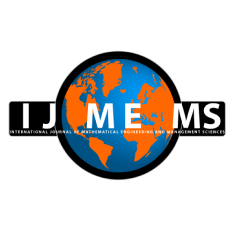Pooja Singh
Symbiosis Centre for Waste Resource Management, Symbiosis International (Deemed University), Pune, Maharashtra, India.
Javid Gani Dar
Symbiosis Institute of Technology, Symbiosis International (Deemed University), Pune, Maharashtra, India.
Manikprabhu Dhanorkar
Symbiosis Centre for Waste Resource Management, Symbiosis International (Deemed University), Pune, Maharashtra, India.
Arundhati Warke
Symbiosis Institute of Technology, Symbiosis International (Deemed University), Pune, Maharashtra, India.
DOI https://doi.org/10.33889/IJMEMS.2025.10.4.049
Abstract
Accurate statistical analysis of the complex and extensive water quality data is crucial to assess the severity of pollution and determine the contribution of each parameter to the overall water quality of aquatic bodies at various locations. This paper describes precise multivariate statistical analysis of the water quality parameters, assessed for rivers Mula and Mutha traversing Pune city, Maharashtra state, India. It examines long-term trends in water quality, and variations before and after the Coronavirus-19 (COVID-19) pandemic. Data from the Maharashtra Stata Pollution Control Board was analysed for eight locations and revealed that Khadakwasla dam had the cleanest water, with a mean highest Dissolved oxygen (DO) of 6.2 mg/l in 2022. At the same time, the Deccan Bridge in the heart of the city was the most polluted stretch of the river, with biochemical oxygen demand (BOD) of 12.23 mg/l and mean faecal coliform load of 25.67 MPN/100 ml in 2022. Principal component 1 (PC1) in 2018 (before COVID-19) and both PC1 and PC2 in 2022 (after COVID-19) covered comparatively maximum variance. High correlations were observed between DO and pH and between chemical oxygen demand (COD) and BOD. Seasonal assessment of water quality at multiple locations can reveal a clear picture of the state of Pune’s rivers. This work is important to provide baseline data on the significance of statistical water quality monitoring, and aid in devising suitable interventions to maintain water quality and public health system in the rapidly expanding Pune city.
Keywords- Correlation analysis, Multivariate analysis, Principal component analysis, River pollution, Water quality assessment.
Citation
Singh, P., Dar, J. G. Dhanorkar, M., & Warke, A. (2025). Multivariate Statistical Analysis of Water Quality of Major Rivers in Pune: A Case Study. International Journal of Mathematical, Engineering and Management Sciences, 10(4), 1013-1031. https://doi.org/10.33889/IJMEMS.2025.10.4.049.



